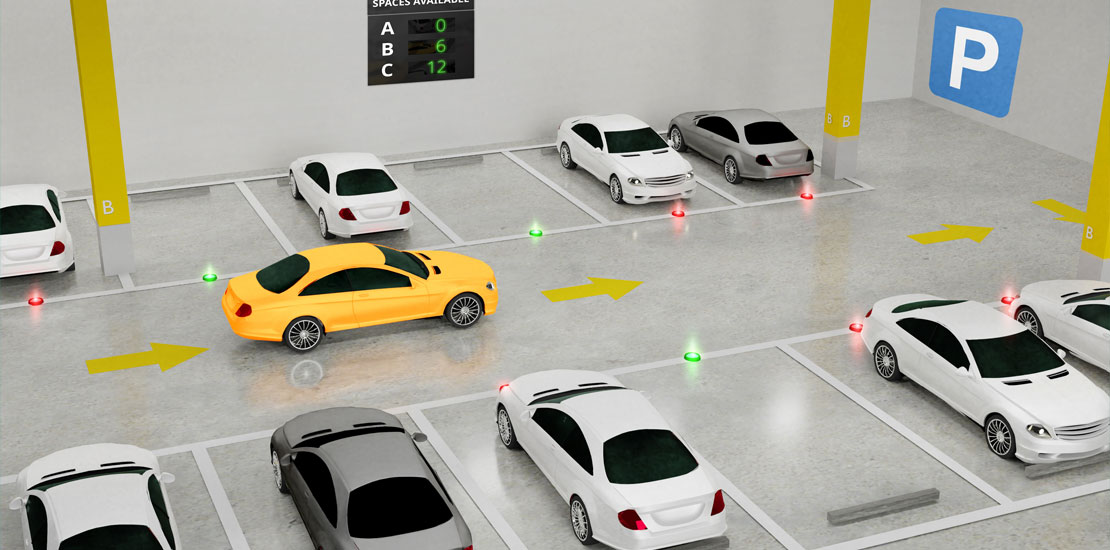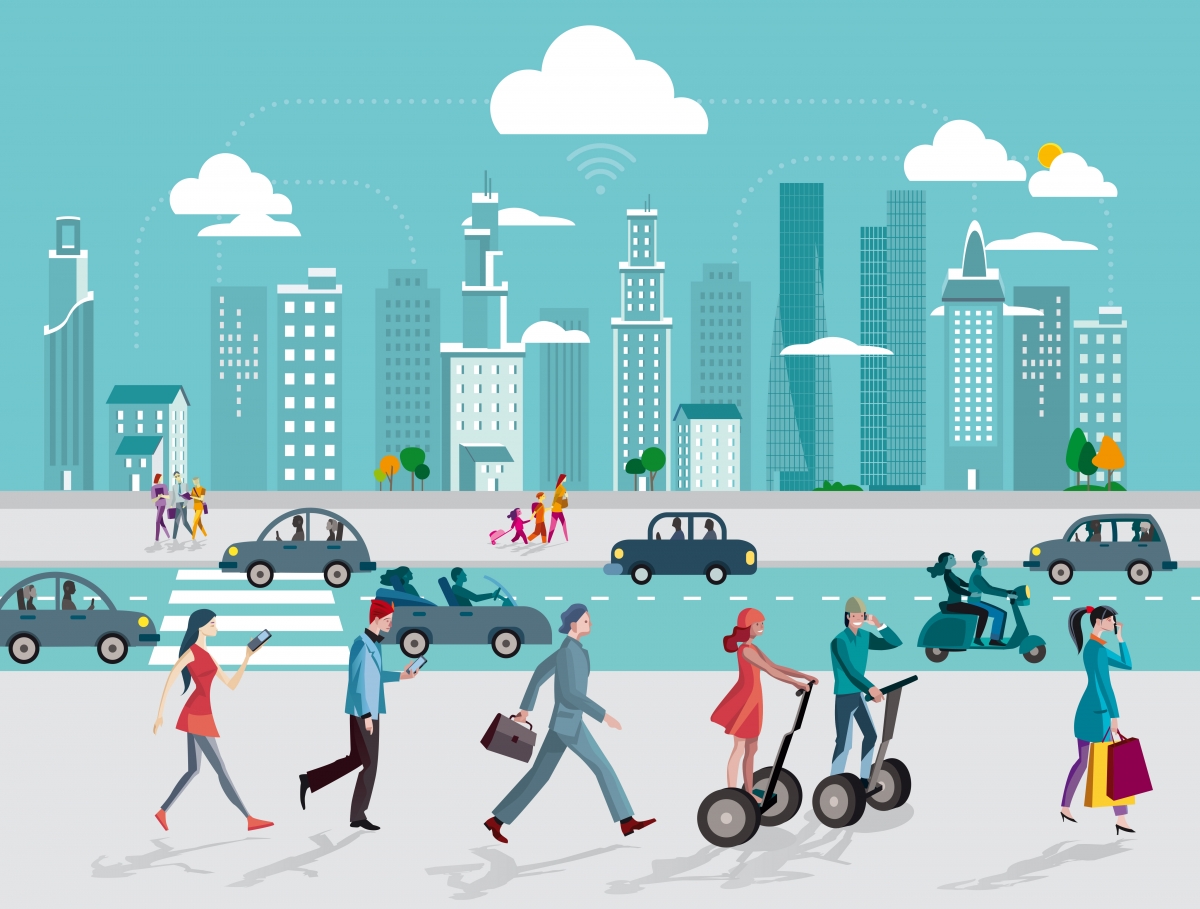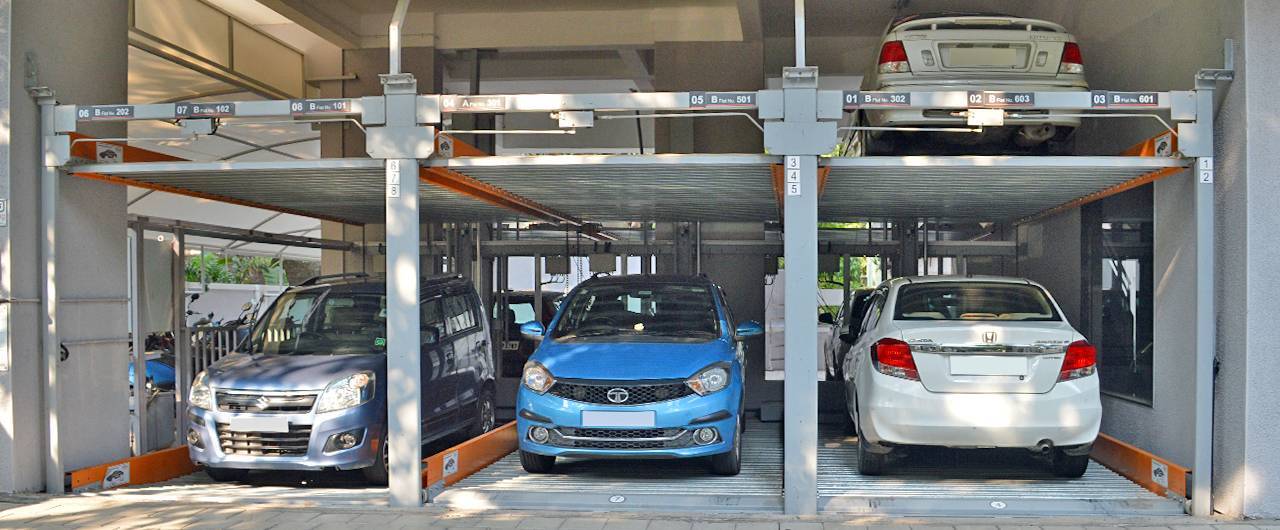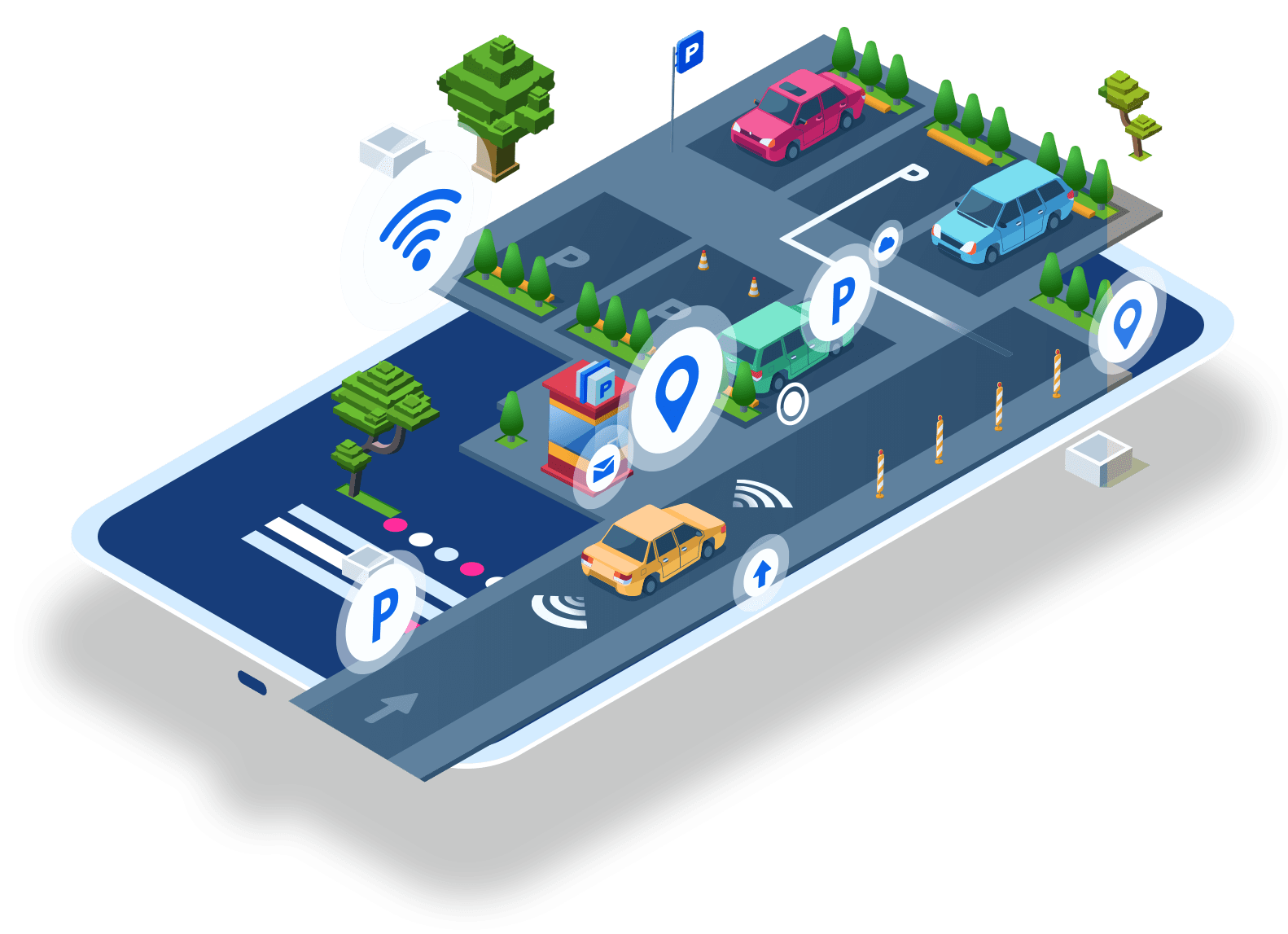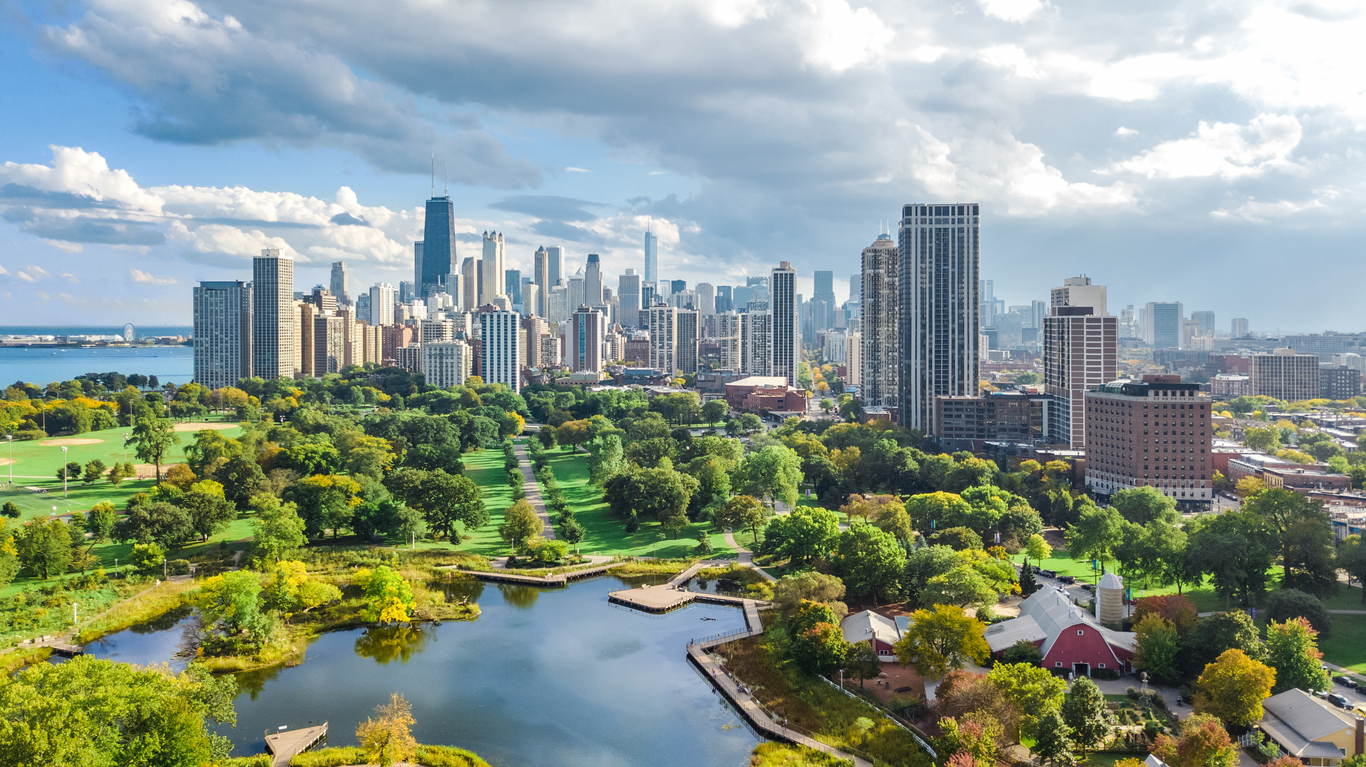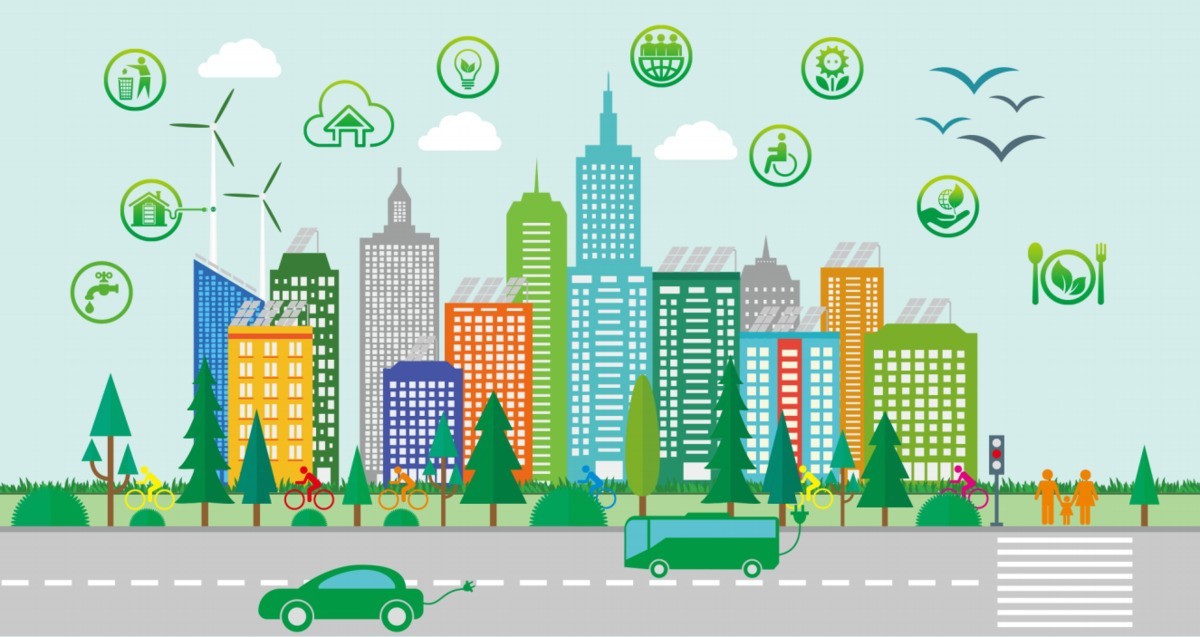Parking Solutions In Urban Planning - Enhancing City Mobility
As populations soar and the number of vehicles on the road increases, urban planners face the daunting task of developing innovative parking solutions that not only accommodate the rising demand but also contribute to sustainable and efficient urban living. In this article, we delve into various parking solutions in urban planning, focusing on optimizing city mobility with parking solutions.
Author:George EvansDec 15, 202372 Shares72K Views

Urbanization has brought both opportunities and challenges, and one of the pressing issues in many growing cities is the management of parking spaces. As populations soar and the number of vehicles on the road increases, urban planners face the daunting task of developing innovative parking solutionsthat not only accommodate the rising demand but also contribute to sustainable and efficient urban living. In this article, we delve into various parking solutions in urban planning, focusing on optimizing city mobility with parking solutions.
The Challenge Of Urban Parking - Navigating The Urbanization Surge
As Cities Grow, So Does the Need for Smart Parking Solutions
Urbanization, marked by the relentless growth of cities, presents a double-edged sword in the form of increased population density. As more people flock to urban areas seeking opportunities, the resulting surge in vehicles compounds the challenges of providing efficient transportation solutions. The most palpable manifestation of this conundrum is the pressing need for adequate and strategic parking spaces, a challenge that extends far beyond mere convenience.
The Urbanization Conundrum
Population Density and its Parking Fallout
As urban landscapesevolve and expand to accommodate the influx of inhabitants, the demand for personal transportation rises proportionally. This surge in vehicles, ranging from private cars to rideshares and delivery services, places an unprecedented burden on cities to rethink their approach to parking infrastructure. The repercussions of this challenge reverberate through the urban fabric, manifesting in traffic congestion, heightened environmental concerns, and a noticeable dip in overall urban mobility.
Traffic Congestion - A Visible Symptom
Gridlock and the Toll on Productivity
The direct consequence of insufficient parking solutions is the ominous specter of traffic congestion. Roads choked with vehicles searching for parking spaces not only lead to productivity losses but also contribute significantly to increased fuel consumption and heightened greenhouse gas emissions. The visual chaos of traffic jams becomes an everyday reality, impacting the quality of life for urban dwellers and posing a substantial economic toll on businesses and commuters alike.
Environmental Concerns - Beyond The Tailpipe
Parking Woes and Their Ecological Ripples
The environmental impact of urban parking challenges extends beyond the visible emissions from idling vehicles. Inadequate parking infrastructure encourages circling behavior as drivers hunt for elusive parking spots, intensifying air pollution and noise levels. Moreover, sprawling parking lots often replace green spaces, further diminishing the city's environmental resilience. As cities strive for sustainability, addressing parking challenges emerges as a crucial step in mitigating their ecological footprint.
Diminished Urban Mobility - The Silent Struggle
Parking Puzzles And Mobility Stagnation
At its core, the parking challenge in urban areas translates to a broader issue a reduction in overall urban mobility. With time spent navigating congested streets in search of parking spaces, individuals and goods alike experience delays, disrupting the seamless flow of urban life. Addressing the intricacies of urban parking is, therefore, pivotal to enhancing the efficiency and fluidity of mobility within cities.
Intelligent Parking Management - Enhancing Urban Appeal And Safety
Strategic Solutions For City Well-Being
In the contemporary urban landscape, the significance of intelligent parking managementcannot be overstated. Beyond the realm of mere convenience, it plays a pivotal role in shaping cities into more attractive and safer spaces for their citizens. This critical aspect of urban planning not only addresses the challenges posed by increasing vehicular traffic but also contributes significantly to the overall well-being and functionality of a city.
Attractiveness And The Urban Aesthetic
Creating a Cityscape that Invites
Intelligent parking management goes beyond the utilitarian function of merely accommodating vehicles; it actively contributes to the aesthetic appeal of a city. By minimizing the visual clutter of cars desperately seeking parking spots and optimizing the use of space, cities can present a more inviting and visually pleasing environment. The reduction of on-street parking chaos enhances the overall ambiance, making urban spaces more attractive for residents and visitors alike.
Safety As A Paramount Concern
Mitigating Risks Through Strategic Planning
Intelligent parking management isn't solely about optimizing space; it's a critical component in ensuring the safety of city dwellers. Well-organized parking solutions reduce the likelihood of traffic accidents caused by distracted drivers searching for parking spots. By streamlining the parking process through technology and strategic planning, cities can create safer roadways, minimizing the risk of collisions and promoting a secure urban environment.
Improved Traffic Flow And Reduced Congestion
Enhancing the Pulse of Urban Movement
Efficient parking management is a key factor in alleviating traffic congestion, a common woe in urban areas. By providing real-time information about available parking spaces and guiding drivers to their destination, intelligent parking solutions contribute to smoother traffic flow. This not only reduces the frustration associated with navigating congested streets but also enhances the overall efficiency of transportation networks, promoting a seamless and dynamic urban movement.
Sustainable Urban Living
Minimizing Environmental Impact
Intelligent parking management aligns with the broader goals of sustainable urban living. By encouraging the use of public transportation, ridesharing, and reducing the time spent in search of parking, these solutions contribute to lower emissions and a more environmentally friendly city. The integration of eco-conscious practices in parking management supports the city's commitment to a greener future, resonating with the growing global emphasis on sustainable urban development.
Citizen-Centric Urban Planning
Prioritizing the Needs of the Community
Perhaps most importantly, intelligent parking management underscores a citizen-centric approach to urban planning. By minimizing the stress associated with parking and enhancing overall mobility, cities can prioritize the needs and well-being of their residents. This approach fosters a positive relationship between citizens and their urban environment, cultivating a sense of pride and satisfaction in the community.
Sustainable Parking Infrastructure - Paving The Way For Green Urban Spaces
Environmental Responsibility in Urban Planning
As cities grapple with the dual challenges of urbanization and environmental sustainability, the integration of eco-friendly practices into parking infrastructure has emerged as a forward-thinking solution. Sustainable parking initiatives, often referred to as Green Parking Initiatives, represent a concerted effort by urban planners to not only address the pragmatic aspects of parking but also contribute to broader environmental conservation goals.
The Green Imperative
Elevating Parking Beyond Functionality
The shift towards sustainable parking infrastructure is motivated by a deep-seated commitment to environmental responsibility. Urban planners recognize that parking lots, traditionally perceived as utilitarian spaces, can become agents of positive change. By infusing green elements into these areas, cities are not only meeting the demand for parking but are also making a statement about their dedication to a more sustainable future.
Permeable Pavement - Nurturing Urban Ecosystems
Beyond Concrete, Toward Permeability
One of the cornerstones of green parking initiatives is the adoption of permeable pavement. Traditional concrete surfaces contribute to stormwater runoff and environmental degradation. Permeable pavement, on the other hand, allows rainwater to seep into the ground, replenishing aquifers and reducing the strain on municipal drainage systems. This environmentally conscious approach transforms parking lots into contributors to the urban ecosystem rather than detractors.
Green Roofs - Aesthetic Harmony And Thermal Regulation
Transforming Parking Lots into Green Oases
Green roofs, adorned with vegetation, serve a dual purpose in parking infrastructure. Beyond their aesthetic appeal, they provide insulation, reducing the heat island effect associated with conventional parking lots. The introduction of green roofs not only mitigates the environmental impact but also creates pleasant, shaded spaces for both vehicles and pedestrians. This harmonious integration of nature into urban parking areas enhances the overall quality of the urban environment.
Rainwater Harvesting Systems - Sustainability Below The Surface
Capturing Precious Drops for Future Use
Green parking initiatives extend below the surface with the incorporation of rainwater harvesting systems. These systems capture and store rainwater, repurposing it for irrigation or flushing, thereby reducing the demand on municipal water supplies. By harnessing nature's bounty, cities enhance their water resilience and contribute to the sustainable management of water resources.
Aesthetics And Urban Beauty
Transforming Parking Lots into Urban Oases
Beyond their functional benefits, green parking initiatives elevate the aesthetics of urban spaces. Lush greenery, permeable surfaces, and sustainable features transform parking lots into urban oases. This not only fosters a sense of well-being among city residents but also aligns with the growing desire for urban environments that seamlessly blend functionality with beauty.
The Imperative For Improved Parking Management - Navigating Urban Challenges
Optimizing Urban Mobility Through Strategic Parking
In the dynamic tapestry of urban life, the need for better parking management has emerged as a critical imperative. As cities continue to burgeon with population influx and vehicular proliferation, the challenges associated with parking demand innovative solutions. Beyond the apparent convenience for drivers, improved parking management is a linchpin for addressing multifaceted urban challenges and fostering a more efficient, sustainable, and livable urban environment.
Urbanization And The Parking Predicament
Population Surges and the Squeeze for Space
The ongoing wave of urbanization has reshaped cityscapes worldwide, bringing with it a surge in population density. As more people gravitate toward urban centers in search of opportunities, the resulting increase in vehicles compounds the complexities of parking management. The strain on existing parking infrastructure is palpable, leading to congestion, environmental concerns, and a palpable reduction in overall urban mobility.
Traffic Congestion: A Call To Action
Untangling Urban Gridlock
One of the most visible repercussions of inadequate parking management is the proliferation of traffic congestion. Streets clogged with vehicles, circling in search of elusive parking spaces, not only disrupt the flow of urban life but also contribute to increased fuel consumption, air pollution, and heightened stress levels for commuters. Improved parking management emerges as a potent tool in untangling the gridlock, promoting smoother traffic flow and enhancing overall urban efficiency.
Environmental Impact - Beyond Exhaust Fumes
Sustainable Parking as a Green Mandate
The need for better parking management dovetails with the imperative for environmental sustainability. Inefficient parking systems exacerbate environmental concerns, with idling vehicles emitting pollutants and the sprawling nature of conventional parking lots encroaching on green spaces. By embracing sustainable parking solutions, cities can mitigate the environmental impact, contributing to cleaner air, reduced carbon emissions, and the preservation of urban greenery.
Utilizing Space Wisely - A Spatial Challenge
Strategic Use of Limited Urban Real Estate
Effective community engagement goes beyond a one-sided conversation; it evolves into a dynamic dialogue that cultivates meaningful interactions between planners and residents. Through workshops, open forums, and collaborative sessions, a valuable platform is created for citizens to voice concerns, articulate preferences, and contribute innovative ideas. This bi-directional communication not only enhances the planning process but also establishes a collaborative atmosphere. In this setting, the community transforms into an engaged partner, actively participating in shaping the dynamics of its own urban environment.
Technological Innovations - Driving Efficiency
Smart Solutions for a Smoother Experience
The advent of technology offers a silver lining to the parking challenge. Smart parking solutions, leveraging sensors, mobile apps, and data analytics, present an opportunity to revolutionize the parking experience. Real-time information on parking availability, automated payment systems, and digital navigation reduce the time and stress associated with parking, contributing to a more seamless urban experience.
Community Well-Being - A Social Imperative
Fostering Community Satisfaction
Beyond the logistical considerations, the need for better parking management is deeply tied to community well-being. A well-managed parking system reduces frustration for residents, enhances the attractiveness of neighborhoods, and promotes a sense of order and safety. Community satisfaction, therefore, becomes an intrinsic aspect of effective parking management, fostering a positive relationship between urban planners and the citizens they serve.
Community Engagement In Parking Planning - A Blueprint For Inclusive Urban Transformation
Empowering Communities Through Inclusive Decision-Making
In the intricate dance of urban development, successful parking solutions extend beyond asphalt and designated spaces; they are deeply intertwined with the fabric of the community. Recognizing this, the call for community engagement in parking planning has become a guiding principle for urban designers and planners. Inclusive decision-making processes not only ensure that proposed parking solutions align with the unique needs and preferences of the local population but also foster a profound sense of ownership and commitment to the transformative changes that accompany them.
Understanding Local Dynamics
Unveiling Community Perspectives
Community engagement in parking planningcommences with a deep dive into the nuances of local dynamics. It involves understanding the daily routines, mobility patterns, and challenges faced by residents. Through town hall meetings, surveys, and focus groups, planners gain invaluable insights into the unique intricacies that shape community life, forming the foundation for parking solutions that resonate with the people they are designed to serve.
Creating A Collaborative Dialogue
Facilitating Conversations for Informed Decisions
Successful community engagement is not a monologue; it's a dialogue that fosters meaningful conversations between planners and residents. Workshops, open forums, and collaborative sessions provide a platform for citizens to voice concerns, express preferences, and contribute ideas. This two-way communication not only enriches the planning process but also establishes a collaborative atmosphere, where the community becomes an active partner in shaping its own urban environment.
Tailoring Solutions To Local Needs
Customizing Parking Plans for Community Benefit
The beauty of community engagement lies in its ability to inform targeted, tailor-made solutions. By actively involving residents in the decision-making process, planners gain insights that go beyond statistical data. This firsthand knowledge allows for the customization of parking plans to address specific community needs, whether they revolve around residential zones, commercial hubs, or recreational spaces.
Fostering A Sense Of Ownership
Investing Communities in Urban Transformation
Engagement is not merely about seeking opinions; it's about instilling a sense of ownership in the community. When residents actively participate in shaping parking solutions, they are more likely to feel a personal connection to the changes. This sense of ownership fosters a commitment to the success of the implemented plans, creating a community-driven momentum that extends beyond parking improvements to a broader investment in the overall well-being of the neighborhood.
Mitigating Potential Resistance
Anticipating Concerns Through Collaboration
Community engagement is a proactive strategy to identify and address potential resistance. By involving residents early in the planning process, concerns and objections can be surfaced and addressed collaboratively. This not only minimizes opposition but also ensures that the final parking solutions are met with a more comprehensive understanding and acceptance from the community.
Building Social Capital
Strengthening the Social Fabric of Communities
Beyond the immediate goals of parking planning, community engagement contributes to the building of social capital. Relationships between neighbors, businesses, and local authorities are strengthened through collaborative decision-making. This social cohesion, in turn, lays the groundwork for future urban initiatives, creating a resilient and interconnected community poised for sustainable growth.
Parking Solutions - People Also Ask
How Can We Solve The Problem Of Parking?
The problem of parking can be addressed through a multifaceted approach that combines innovative technologies, strategic urban planning, and community engagement. Here are key strategies:
- Smart Parking Systems:Implement intelligent parking systems that use sensors and data analytics to provide real-time information on available parking spaces. This helps drivers locate parking efficiently, reducing the time spent circling for a spot.
- Multi-Modal Transportation:Encourage the use of public transportation, cycling, and walking to reduce the dependence on personal vehicles. Integrated transportation systems can alleviate the demand for parking spaces.
- Mixed-Use Development:Integrate residential, commercial, and recreational spaces in urban planning to minimize the need for extensive parking lots. This approach optimizes land use and reduces the demand for dedicated parking areas.
- Sustainable Parking Solutions:Adopt eco-friendly parking infrastructure, including permeable pavement, green roofs, and rainwater harvesting systems. Sustainable parking not only reduces environmental impact but also enhances the aesthetic appeal of urban spaces.
- Community Engagement:Involve the community in the decision-making process for parking solutions. Understanding local needs and preferences helps tailor parking plans to specific communities, fostering a sense of ownership and cooperation.
- Innovative Design:Explore creative architectural designs for parking structures, such as vertical parking, automated parking systems, and adaptive reuseof existing spaces. This maximizes parking capacity while minimizing the physical footprint.
What Is Parking Management Solutions?
Parking management solutions refer to the systematic and strategic approaches used to optimize the use of parking spaces in urban areas. These solutions encompass a variety of methods and technologies aimed at improving the efficiency, accessibility, and sustainability of parking. Key elements of parking management solutions include:
- Technology Integration:Utilize smart technologies such as sensors, cameras, and mobile apps to gather real-time data on parking space availability and streamline the parking process.
- Data Analytics:Analyze parking data to understand usage patterns, peak times, and areas of high demand. This information can inform decision-making for future parking planning and infrastructure development.
- Payment Systems:Implement efficient and user-friendly payment systems, including mobile payments, contactless options, and automated payment kiosks, to enhance the overall parking experience.
- Zoning and Regulations:Develop and enforce parking regulations and zoning policies that align with urban planning goals. Properly designed regulations can discourage illegal parking and ensure fair access to parking spaces.
- Community Outreach:Engage with the local community to gather input on parking preferences and challenges. This collaborative approach helps build consensus and ensures that parking management solutions meet the specific needs of the community.
- Environmental Considerations:Integrate sustainable practices into parking management, such as the use of green infrastructure, electric vehicle charging stations, and initiatives to reduce the environmental impact of parking facilities.
What Is The Smart Solution For Parking?
Smart solutions for parking leverage technology and data-driven approaches to make parking more efficient, convenient, and environmentally friendly. Here are some components of smart parking solutions:
- Smart Parking Systems:Implement sensors and IoT devices to monitor parking space occupancy in real-time. This information is then relayed to drivers through mobile apps, guiding them to available parking spots.
- Mobile Applications:Develop user-friendly mobile applications that allow drivers to find and reserve parking spaces in advance, pay seamlessly through the app, and receive real-time updates on parking availability.
- Automated Parking Facilities:Explore automated parking systems that use robotics to park and retrieve vehicles, maximizing space utilization in densely populated urban areas.
- Data Analytics:Employ advanced analytics to analyze parking data, predict demand, and optimize parking infrastructure. This helps in planning future developments and adapting to changing usage patterns.
- Electric Vehicle (EV) Infrastructure:Integrate charging stations for electric vehicles within parking facilities, promoting sustainable transportation choices and accommodating the growing popularity of electric vehicles.
- Dynamic Pricing:Implement dynamic pricing models that adjust parking fees based on demand, time of day, or special events. This encourages efficient use of parking spaces and helps manage congestion.
- Integration with Public Transport:Create seamless integration between parking solutions and public transportation systems, allowing users to transition easily between modes of transportation.
Conclusion
Driving Towards a Sustainable Future
Parking solutions in urban planning are crucial for addressing the challenges posed by urbanization and the increasing number of vehicles on the road. By embracing sustainable practices, smart technologies, and innovative design concepts, cities can create parking solutions that not only meet the current demand but also contribute to a more sustainable and livable urban future. As urban planners continue to navigate the complexities of modern city life, prioritizing effective parking solutions remains a key element in shaping the cities of tomorrow.
Jump to
The Challenge Of Urban Parking - Navigating The Urbanization Surge
Intelligent Parking Management - Enhancing Urban Appeal And Safety
Sustainable Parking Infrastructure - Paving The Way For Green Urban Spaces
The Imperative For Improved Parking Management - Navigating Urban Challenges
Community Engagement In Parking Planning - A Blueprint For Inclusive Urban Transformation
Parking Solutions - People Also Ask
Conclusion

George Evans
Author
George Anderson, an exceptional architectural designer, envisions and brings to life structures that transcend the realm of imagination. With an unwavering passion for design and an innate eye for detail, George seamlessly blends form and function, creating immersive spaces that inspire awe.
Driven by a deep appreciation for the interplay of space, light, and materials, George's innovative approach redefines the possibilities of architectural design. His visionary compositions leave an indelible mark, evoking a sense of wonder and transforming the built environment.
George Anderson's transformative designs and unwavering dedication continue to shape the architectural landscape, pushing the boundaries of what is possible and inspiring generations to come.
Latest Articles
Popular Articles
